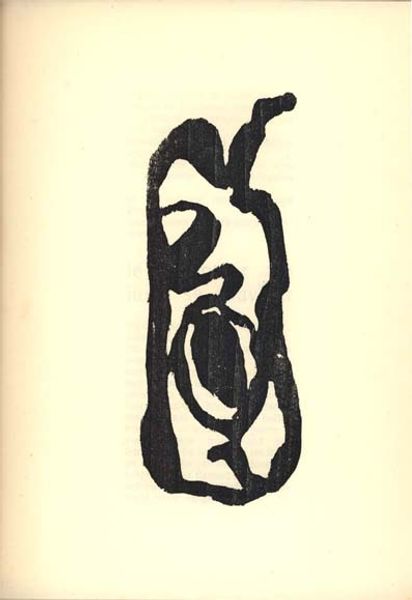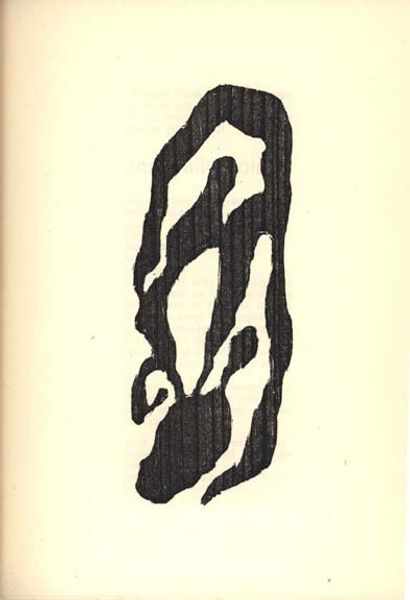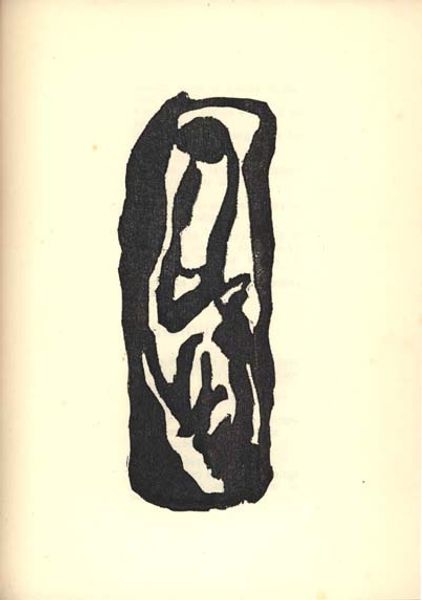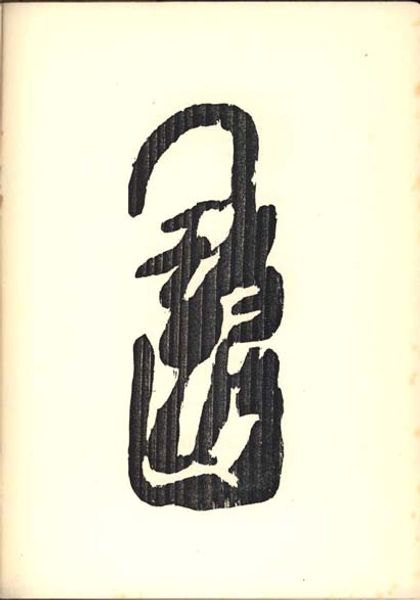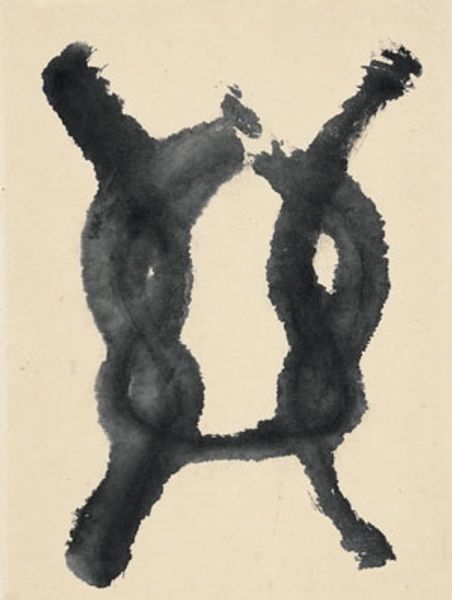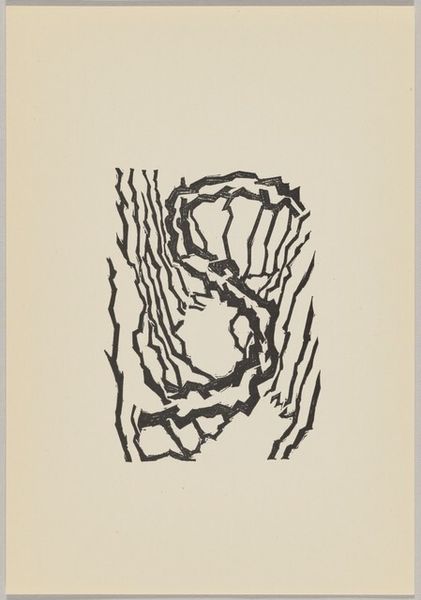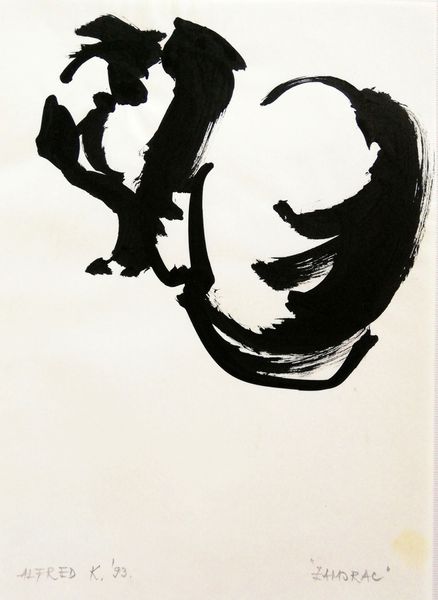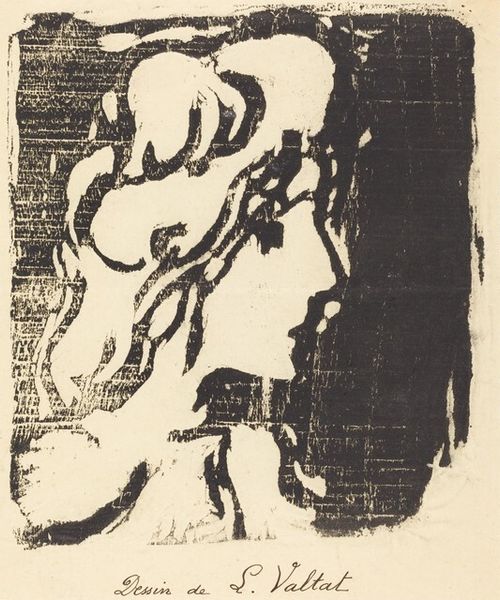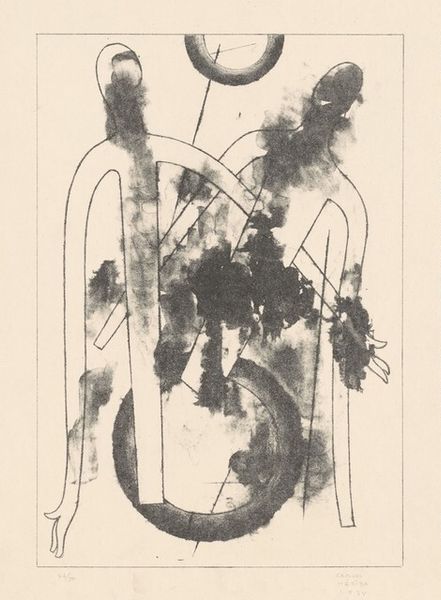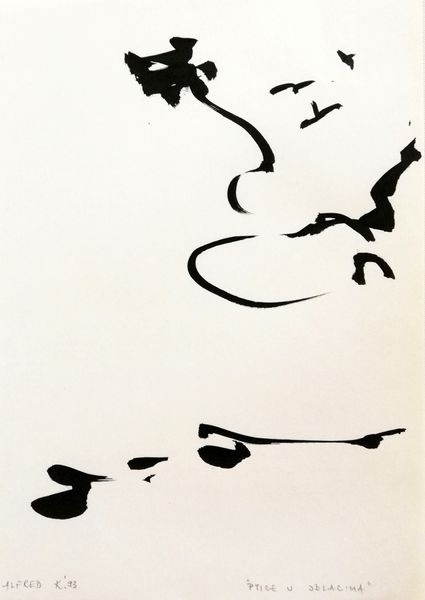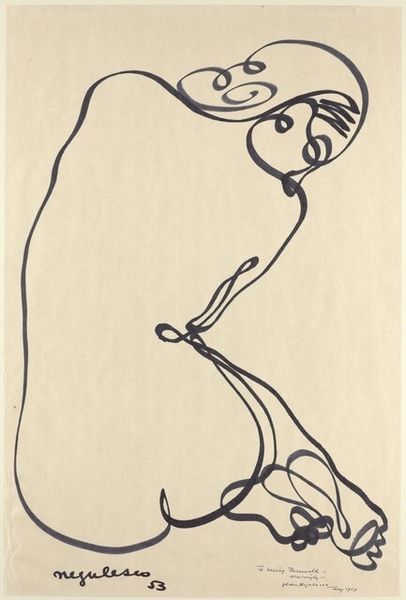
drawing, ink
#
drawing
#
art-nouveau
#
ink
#
dada
#
abstraction
Copyright: Public domain US
Curator: Here we have Jean Arp's ink drawing "Illustration for Tristan Tzara's 'Vingt-cinq poèmes'", dating back to 1918. Editor: My immediate impression is one of stark contrast and primal forms. It feels almost like a glyph, radiating an air of enigmatic energy. Curator: Indeed. Consider the Dadaist context: rejecting the order and rationality that led to WWI. Arp employed chance and spontaneity in his creative process, exploring the relationship between text and image as commodities produced during that time. Editor: The figure certainly resonates with symbolic echoes— perhaps a nascent, still-forming consciousness? Or even a disruption of one. The winding loops are quite evocative, as if depicting pathways not yet navigated. It feels deeply personal, yet presented without overt emotion. Curator: Absolutely. Dada often played with disrupting aesthetic conventions to challenge what could constitute "art," thus impacting systems of labor that reinforce societal conventions. The ready availability of materials was integral to its production and the challenging of institutions and commodification. Editor: And how intriguing that Arp uses such bold, simple strokes, considering the volatile period and cultural revolution happening simultaneously! The economy of line directs our attention not only to the image itself but also to the void surrounding it – creating a sense of infinite potential but perhaps latent with instability. Curator: His choices regarding materials reveal their significance, challenging art and commodity conventions. The drawing on the page exists almost to critique and offer other possibilities through art making. Editor: I see your point about artistic rejection and material value and, beyond that, these shapes seem deeply connected to primal instincts, almost biological. We observe a moment frozen, caught within these inky coils, as we imagine something ancient slowly finding life again... fascinating to consider now from a distanced perspective. Curator: Exactly. Thinking about the artist and poet together and where that placed their work within a wartime market reveals quite a bit about artistic intention and labor. Editor: That it does! Analyzing symbols and the manufacturing and marketing process truly broadens our interpretation of works like this. Curator: The beauty truly lies in understanding the interconnectedness of materials and symbols during periods of art-making.
Comments
No comments
Be the first to comment and join the conversation on the ultimate creative platform.
